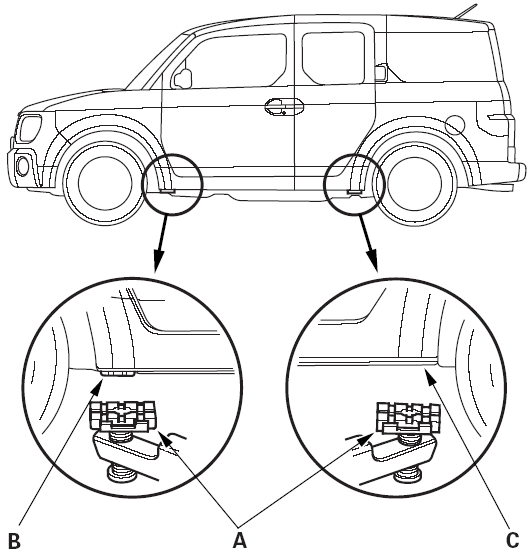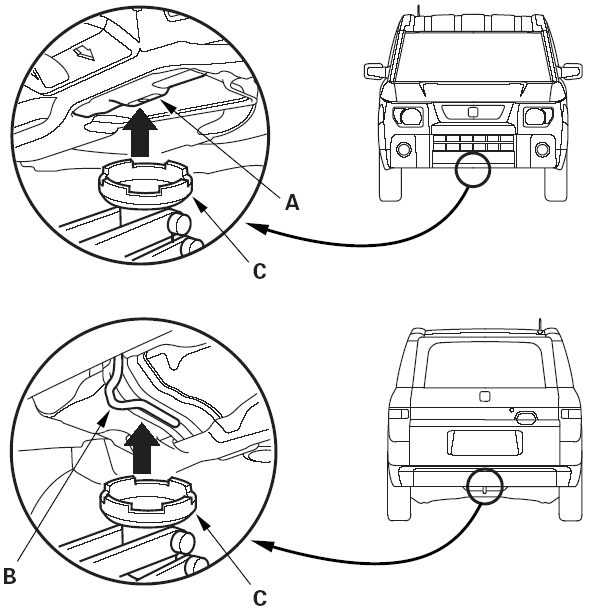Jacking Points
(Source: 2003 body repair manual)
NOTE: If you are going to remove heavy components such as suspension or the fuel tank from the rear of the vehicle, first support the front of the vehicle with tall safety stands. When substantial weight is removed from the rear of the vehicle, the center of gravity can change and cause the vehicle to tip forward on the hoist.
Frame Hoist
1. Position the hoist lift blocks (A), or safety stands, under the vehicle's front support points (B) and rear support points (C).
2. Raise the hoist a few inches, and rock the vehicle gently to be sure it is firmly supported.
3. Raise the hoist to full height, and inspect the lift points for solid contact with the lift blocks.
Safety Stands
To support the vehicle on safety stands, use the same support points (B and C) as a frame hoist. Always use safety stands when working on or under any vehicle that is supported only by a jack.

(Honda)
Floor Jack
1. Set the parking brake when lifting the front of the vehicle; put the gearshift lever in reverse, or the automatic transmission in the "P" position when lifting the rear of the vehicle.
2. Block the wheels that are not being lifted.
3. Position the floor jack under the front jacking bracket (A) or rear jacking bracket (B), center the jacking bracket in the jack lift platform (C), and jack up the vehicle high enough to fit the safety stands under it.
4. Position the safety stands under the support points and adjust them so the vehicle will level.
5. Lower the vehicle onto the stands.

(Honda)
Site owner's note: On 4WD models, the crossmember beneath the rear differential makes a fine jacking point.